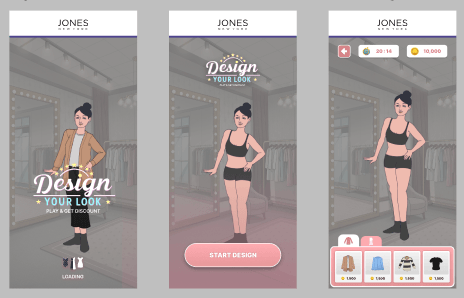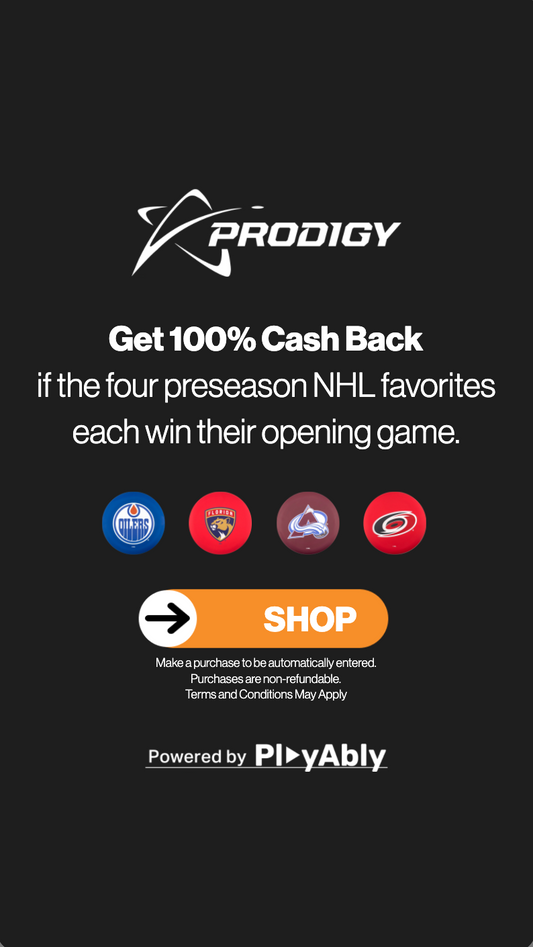Shoppable Games: Turning Gamification into an Engaging Shopping Experience
Vintage Cars Customizable Game
Creating Customer Journeys Experiences in eCommerce with Gamification
Download The Guide
Gamification has taken the digital world by storm, turning routine activities into interactive and rewarding experiences. In the realm of e-commerce, this trend has birthed the concept of "shoppable games" — a playful fusion of shopping and gaming that makes online purchasing not only convenient but genuinely enjoyable. But what exactly are shoppable games, and why are they so effective? Let’s dive in.
What Are Shoppable Games?
Shoppable games are an innovative form of gamification that incorporates gaming mechanics into the shopping process. Instead of browsing a traditional online store, customers engage in mini-games, quizzes, or interactive challenges to discover products, unlock discounts, or earn rewards. These games seamlessly blend entertainment with commerce, creating a unique and memorable user experience.
Vintage Cars Customizable Game
Gamification and conversion optimization go hand in hand. While gamification keeps users engaged, conversion optimization ensures that engagement leads to action—whether that’s making a purchase.
Download The GuideThink of it as the digital equivalent of a treasure hunt or spinning a prize wheel. Customers are incentivized to play, and their engagement is rewarded with personalized offers, exclusive deals, or even direct purchases within the game itself.
Why Are Shoppable Games So Fun?
The success of shoppable games lies in their ability to tap into our intrinsic love for play and rewards. Here’s why they resonate:
-
Interactive Engagement: Games naturally draw attention by requiring active participation. Unlike passive scrolling, they encourage users to interact with the brand.
-
Reward Systems: The thrill of earning a discount or discovering a special offer activates the brain’s reward system, making the experience both enjoyable and satisfying.
-
Personalization: Many shoppable games use data to tailor challenges and rewards, creating a sense of individuality and connection with the customer.
-
Escapism: Shopping through games provides a fun escape from the mundane, transforming e-commerce into an exciting adventure.
-
Social Sharing: Many games integrate social elements, encouraging players to share their results or challenge friends, amplifying engagement through peer interactions.
Additionally, with attention spans averaging just 8 seconds—a sharp decline from 12 seconds in 2000—shoppable games provide an immediate and engaging way to captivate audiences before they move on.
How Shoppable Games Work
Shoppable games use simple yet effective gamification principles to boost customer engagement. Here are a few key components:
-
Challenges and Goals: Users are presented with tasks such as completing a puzzle, answering trivia, or spinning a wheel. These tasks are often tied to discovering products or unlocking discounts.
-
Progression Systems: Games often feature levels, badges, or milestones that keep users motivated to continue exploring.
-
Rewards: Whether it’s a coupon, a freebie, or an exclusive product reveal, the promise of a reward keeps users coming back.
-
Integrated Purchases: Some shoppable games allow users to purchase products directly within the game interface, streamlining the conversion process.
-
Time Sensitivity: Limited-time rewards or challenges add urgency, prompting users to act quickly.
The Benefits of Shoppable Games for Brands
For businesses, shoppable games provide numerous advantages beyond customer satisfaction:
-
Increased Engagement: Games keep users on your platform longer, increasing the likelihood of conversion.
-
Stronger Brand Loyalty: Gamification fosters positive associations with your brand, encouraging repeat visits.
-
Valuable Data: Tracking user interactions within the game provides insights into preferences and behaviors.
-
Viral Potential: Social sharing mechanisms can turn your shoppable game into a buzzworthy experience.
In the last five years, store engagement has fallen by 62%, highlighting the need for innovative approaches like gamification. When done well, gamification can lead to a 20% increase in conversions and a 30% increase in SMS/email opt-ins. It’s also highly effective for in-store traffic, which can rise by up to 53% with gamified experiences.
Moreover, integrating gamified features into loyalty programs drives significant results. Nielsen (2021) found an 18% higher retention rate for loyalty programs with gamification compared to traditional discounts. Similarly, KPMG (2021) reported a 40% higher redemption rate in gamified loyalty programs, indicating stronger customer interaction and satisfaction.
PWC (2020) highlighted that consumers participating in interactive loyalty activities spend 34% more annually, while Deloitte (2021) observed a 30% higher engagement rate in gamified loyalty programs. These enhancements translate into measurable improvements, such as a 23% boost in customer lifetime value (Accenture, 2022) and 35% higher mobile app usage among retailers using gamified loyalty features (Gartner, 2020).
By integrating gamification elements into e-commerce platforms, businesses can transform the shopping experience into an engaging journey. This approach not only captivates customers but also provides valuable data on user behavior. Utilizing advanced SaaS reporting tools, companies can analyze this data to refine their strategies, optimize engagement, and drive sales.
Examples of Shoppable Games in Action
-
Spin-to-Win: Popular with fashion and beauty brands, these virtual wheels offer users a chance to win discounts or freebies.
-
Trivia Challenges: Quizzes related to your products or industry add an educational twist to gamification.
-
Virtual Treasure Hunts: Users explore your website or app to find hidden items, unlocking exclusive rewards along the way.
-
Interactive Stories: Narratives where customers make choices that lead to personalized product recommendations.
It’s worth noting that Temu, the most downloaded shopping app globally, has capitalized on gamification to engage users effectively. Gamified ad campaigns achieve a 2-3 times higher ROAS (Return on Ad Spend) compared to traditional methods, while games outperform surveys with a staggering 33x higher ROAS.
Why Gamification Works in E-commerce
At its core, gamification appeals to basic human psychology. It makes mundane tasks—like shopping—more engaging, incentivizes participation, and creates memorable experiences. By incorporating elements like challenges, rewards, and social connectivity, gamification turns the shopping journey into a joy-filled adventure.
Gamified loyalty programs also tap into evolving consumer preferences. The Bond Brand Loyalty Report (2022) revealed that over 80% of consumers are more likely to engage with loyalty programs offering interactive, game-like experiences instead of standard transactional rewards. Among younger consumers, particularly millennials and Gen Z, 68% prefer brands that make earning rewards fun and engaging rather than straightforward points systems (Pew Research Center, 2022). Furthermore, playful, game-based customer interactions have been shown to increase shopping frequency by 15% among the most loyal customer segments (Harvard Business Review, 2020) and boost spending per transaction by 25% (Capgemini Research Institute, 2019).
Ready to Add Some Play to Your Day?
Shoppable games are more than a passing trend; they represent the future of online shopping. By combining entertainment with commerce, they create an experience that’s engaging, rewarding, and unforgettable. Whether you’re a customer looking for a more fun way to shop or a business aiming to stand out in a crowded market, shoppable games are the perfect solution.



